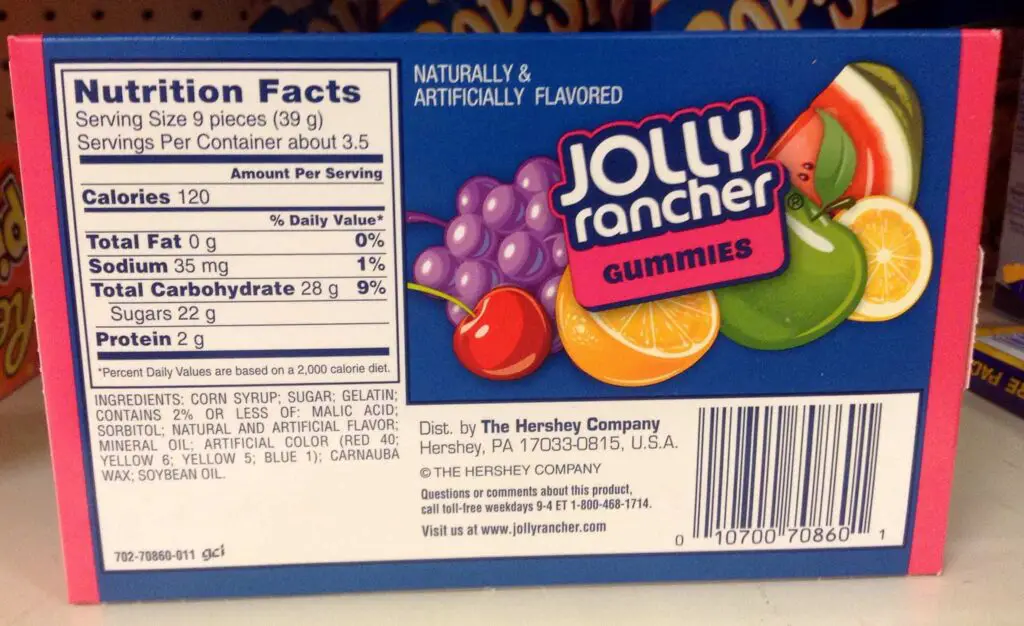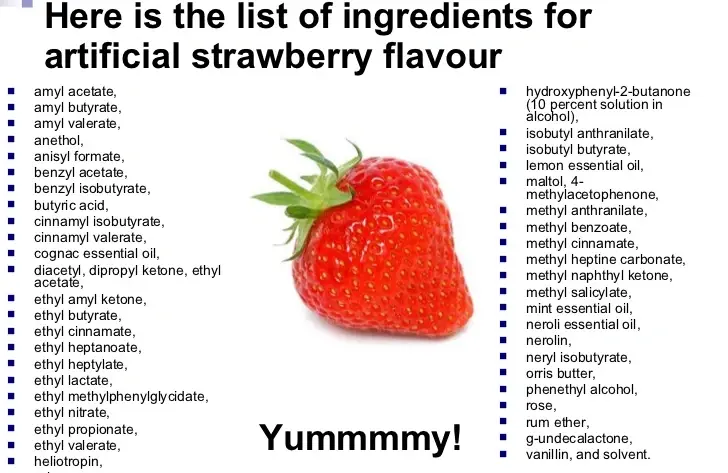If you go to your kitchen cabinet right now and pick up the first food package you see, You’ll probably find the word “flavor” on the ingredient list.
This is because the processed food industry adds flavors to pretty much everything. When a food is heavily processed, packed with preservatives, and packaged to get shipped across the country, only to be stored on a shelf for months… you can guarantee that it’s going to lose its flavor.
That’s why there is a multi billion dollar industry dedicated solely to creating chemical flavors to make that processed food taste like real food. Because let’s be honest… if people knew the extent, they’d have a hard time considering it real at all.

Not only do these flavors make fake food taste real, they literally add chemical flavors that are highly addictive, even some that are “natural”. These create an inability to stop eating because the flavors trick your mind into wanting more and more.
Do you know why Americans eat more calories than any other industrialized nation? It’s because our food supply is chemically produced and enhanced with these “flavors”, when many countries have banned these chemicals to be used in their food.
Stop Eating These 15 Popular Snack-Foods Americans Love That Are Banned In Other Countries, And For Good Reason
The term “flavors” on a package can be highly misleading. Flavor companies own these proprietary formulas… making it near impossible to find out exactly what’s in them.
You’d like to think that “natural apple flavor” is just some juice extracted from an apple and inserted into the food. But in fact, that “natural apple flavor” needs to preserved and stabilized and has agents added to help it mix well into a product.
This is why flavors can contain upwards of 100 ingredients like propylene glycol, polysorbate 80, BHT, BHA… all considered “incidental additives” not required to be labeled by the FDA. The FDA doesn’t require companies to tell you what is in the flavors they use. It’s a complete mystery ingredient.
Who is overseeing the safety of flavors in our food?

The Flavor and Extract Manufacturers Association (FEMA), has assembled their own panel of scientists who review and approve new flavors as Generally Recognized As Safe (GRAS). These scientists are paid by the FEMA trade group, who get their funding from flavor companies.
These FEMA panel scientists claim to be independent and free of conflicts of interest, but there is much concern about their closed-door evaluations and lack of transparency with the public. This panel being assembled and paid for by a flavor company trade group is a red-flag in itself.
Public advocacy groups have called on the FDA to ban certain flavor substances that are linked to cancer, but little has been done. Some chemicals used to make flavors, like Diacetyl (which is used to make buttery flavor), are highly dangerous for those that work around them even.
Labels on the processed food have a wide spectrum of say “natural flavors” or “artificial flavors” but most people don’t know the differences between them. Let’s discuss the differences between these confusing terms.
Artificial Flavors

Artificial flavors are chemical mixtures made with synthetic (not natural) ingredients in a lab. They’re produced by fractional distillation and chemical manipulation of various chemicals like crude oil or coal tar.
Artificial vanilla flavor can be made from wood pulp. With artificial flavors, chemists can make anything taste like a strawberry without any actual strawberries (or any actual food for that matter). This is a great thing for food manufacturers because artificial flavors are much cheaper than using real food/natural flavoring. It is, of course, terrible for our health.
Natural Flavors
Natural Flavor is practically the exact same thing as Artificial Flavor, but it’s derived from substances found in nature (plants, animals, etc). So, the flavor is derived from natural things, but it’s important to remember that this isn’t all it contains.
All flavors typically contain preservatives, emulsifiers, solvents and other “incidental additives”, which can make up 80% of the formulation. Incidental additives in flavors include: sodium benzoate, glycerin, potassium sorbate, and propylene glycol.
Chemists create these complex formulations in a lab, isolating and blending specific flavors that could come from hundreds of compounds, some of which may be GMOs. These compounds can come from substances that are nowhere close to the actual thing.
For example, there is a “natural flavoring” that is made to taste like raspberries but in fact has zero raspberries and is actually made from castoreum which comes from a beaver’s anus. Still considered natural though, because it comes from an animal, which is considered “natural”.
Natural “Specific” Flavor
If a product states “Natural Cinnamon Flavor” or any other flavor, this means that the flavor is derived only from the named fruit, vegetable, animal or plant. The reason food companies use this kind of flavoring is because it’s cheaper than using the actual ingredient in it’s raw form.
Incidental additives still a concern in the natural flavorings.
Natural/Artificial “Specific” Flavor
You’ll see a label like this when there are both natural and artificial flavors in a product. It doesn’t necessarily mean the specific flavor is used.
“Specific” Flavor, With Other Natural Flavor

This means the food contains a flavor derived from a certain flavor like raspberries, but ALSO other natural flavors that don’t come from raspberries. This apparently doesn’t need to be listed on the ingredient list, but is required on the front panel of package.
Organic Natural Flavor
Organic Natural Flavor is made just like other organic ingredients and needs to follow the same regulations. That means that organic flavors won’t contain synthetic solvents or preservatives, and no GMOs. Most incidental additives are also banned from organic natural flavors.
While our regulations are forever changing by the FDA, it is important to keep up with the system and understand what is in the food we are eating and feeding our families. I believe this best was to avoid dangerous additives and flavorings is to eat close to Mother Nature, with real foods and less boxes and packages. Your mind, body, and soul will thank you.





